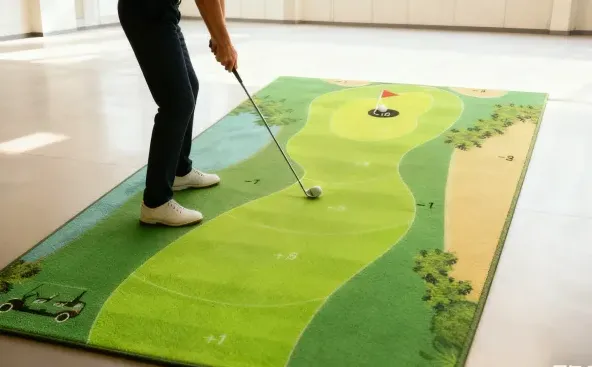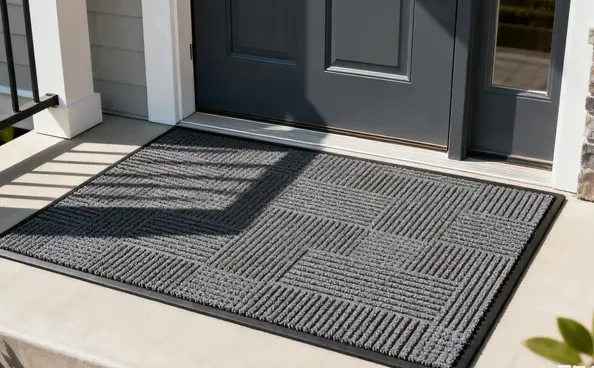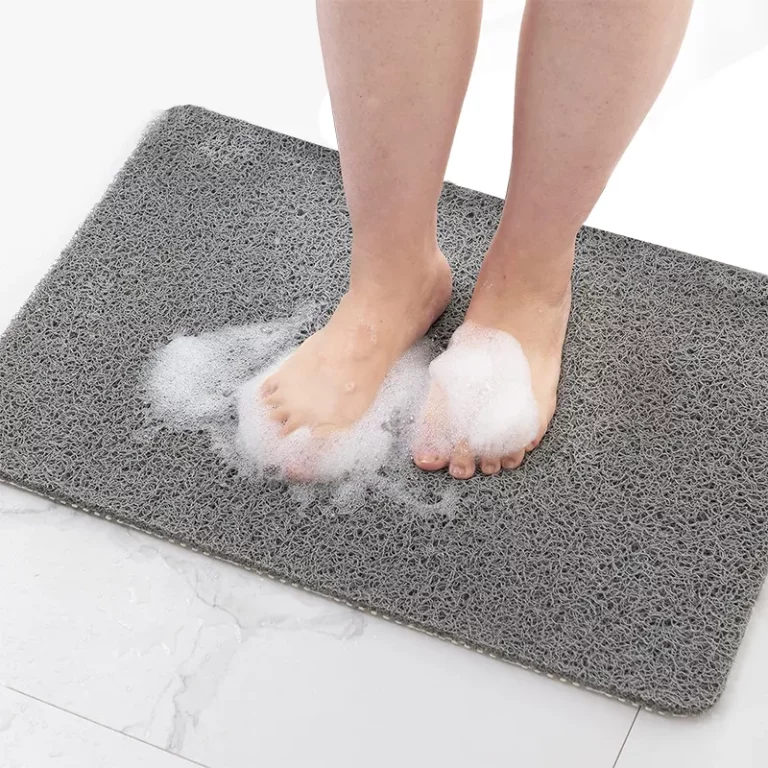From Raw Material to Finished Product: How We Make Quality Mats
Mats are an integral part of our daily lives, from cozy floor mats to essential yoga mats that enhance our wellness routines. Ever wondered about the journey a mat takes from raw materials to a finished product? This article delves into the mat manufacturing process, revealing the detailed steps and quality standards that ensure each mat’s functionality and durability.

Πίνακας περιεχομένων
What Materials Are Used in Mat Production?
Ο mat manufacturing process begins with the selection of raw materials. Mats can be made from various materials, including natural fibers like γιούτα και φυσικό καουτσούκ, as well as synthetic options like πολυπροπυλένιο και thermoplastic compounds.
These materials are chosen based on the desired λειτουργικότητα, ανθεκτικότητα και flexibility and strength of the final product. For instance, polypropylene mats are popular for their strength and durability, making them ideal for high-traffic areas.
How Does Material Preparation Impact Mat Quality?
Material preparation is a critical step in ensuring the best quality mats. This involves processing raw materials to achieve the required tensile strength and texture. Natural fibers may be cleaned and spun, while synthetic materials are often melted and extruded into fibers.
Proper preparation ensures that the mats will meet customer requirements for both appearance and performance. For example, achieving straight edges and consistent thickness depends on meticulous material handling.
What Is the Role of Fiber in Mat Manufacturing?
Fiber is the fundamental building block in mat production. It determines the mat’s texture, durability, and overall feel. During the manufacturing process, fibers are woven or bonded together to create a cohesive surface.
The choice between natural and synthetic fibers affects not only the mat’s properties but also its environmental impact. Mats made from organic materials like γιούτα offer eco-friendly options, while synthetic fibers provide enhanced durability.
How Are Yoga Mats Made Specifically?
Yoga mats require specific characteristics such as cushioning, αντιολισθητικό surfaces, and durability. The manufacturing process involves blending materials like φυσικό καουτσούκ or PVC with additives to enhance grip and comfort.
Ο process of yoga mat production includes:
- Επιλογή υλικού: Choosing non-toxic, φθαλικό-free materials.
- Formulation: Mixing materials with colorants and other additives.
- Molding: Shaping the mat under pressure and temperature.
- Φινίρισμα: Texturing the surface of the mat for grip.
Η διαδικασία αυτή διασφαλίζει ότι yoga mats are made to support practitioners effectively while maintaining safety standards.
What Are the Detailed Steps in the Manufacturing Process?
Ο mat manufacturing process typically involves several key steps:
- Material Preparation: Processing raw materials to the desired form.
- Weaving or Molding: Creating the mat structure using weaving machines or molds.
- Βαφή: Applying colors using dye ή screen printing methods.
- Curing: Setting the materials through heat or chemical processes.
- Trimming: Cutting the mats to the desired size και διασφαλίζοντας straight edges.
- Quality Inspection: Checking that the product meets all specifications.
- Packaging: Preparing the finished mats for distribution.
Each step ensures that the mats are produced efficiently while maintaining high standards.
Why Is the Weaving Process Critical?
Ο weaving process is integral to mat production, particularly for fabric-based mats. It involves interlacing fibers to create a durable and flexible surface. This process ensures:
- Strength and Durability: Achieving the right weave pattern enhances the mat’s lifespan.
- Ευκαμψία: Allowing the mat to roll or fold without damage.
- Αισθητική Έκκληση: Providing visual patterns or textures.
Different materials may require specific weaving techniques, such as a criss-cross pattern for added strength.
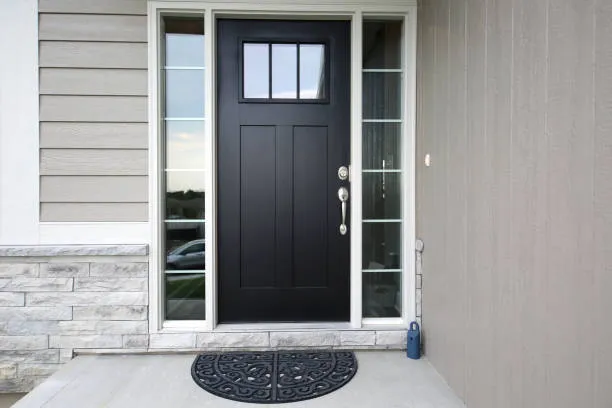
How Do Manufacturers Ensure Mat Durability?
Ensuring αντοχή involves several factors:
- Επιλογή Υλικού: Using high-quality, resilient materials.
- Ποιοτικός έλεγχος: Implementing rigorous quality inspection procedures.
- Curing Processes: Applying the correct pressure and temperature during curing.
- Finishing Techniques: Adding protective coatings or treatments like uv-resistant τελειώνει.
By focusing on these areas, manufacturers produce mats that withstand wear and environmental factors.
What Quality Standards Are Upheld in Mat Production?
Quality is paramount in mat manufacturing. Mat manufacturers uphold standards by:
- Adhering to Regulations: Complying with industry-specific guidelines.
- Implementing Quality Control: Checking for defects and ensuring high-quality products.
- Meeting Certifications: Obtaining certifications for safety, such as non-toxic and φθαλικό-free materials.
- Customer Feedback: Continually improving based on user experiences.
These practices ensure that the product meets consumer expectations and safety requirements.
How Does Recycling Play a Role in Mat Manufacturing?
Environmental concerns have led to the incorporation of recycled materials in mat production. This approach:
- Reduces Carbon Footprint: Minimizes environmental impact.
- Provides a Source of Income: Supports recycling industries.
- Innovates Products: Leads to new materials and designs.
Using recycled content, manufacturers can create mats without compromising on quality, contributing to sustainability efforts.
What Innovations Are Shaping the Future of Mats?
The mat industry is evolving with innovations such as:
- Smart Mats: Incorporating technology for interactive workouts.
- Υλικά φιλικά προς το περιβάλλον: Developing mats from organic materials and biodegradable substances.
- Προσαρμόσιμα σχέδια: Allowing consumers to personalize mats.
- Enhanced Functionality: Improving features like αντιολισθητικό surfaces and cushioning.
These advancements meet the growing demand for products that combine performance with environmental responsibility.
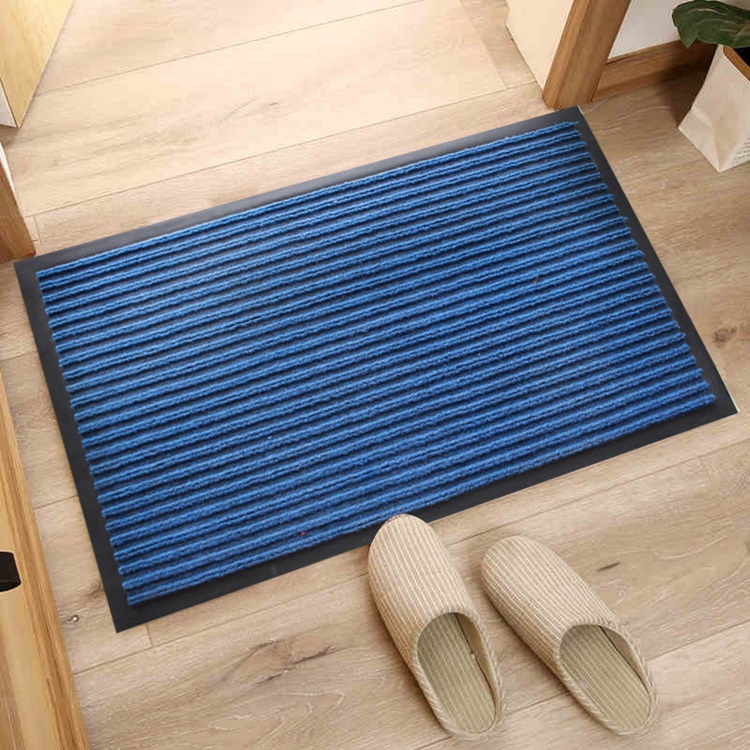
Περίληψη
- Mat Manufacturing Process: Involves material preparation, weaving/molding, dyeing, curing, trimming, and quality inspection.
- Υλικά: Selection of natural or synthetic fibers like πολυπροπυλένιο impacts mat properties.
- Quality Standards: Ensured through rigorous inspections and adherence to regulations.
- Αντοχή: Achieved by using quality materials and proper manufacturing techniques.
- Καινοτομία: Driven by sustainability and technological advancements.
For high-quality mats that combine durability and functionality, exploring options like the Χαλάκια πόρτας καλωσορίσματος με διπλή λωρίδα βαρέως τύπου can offer both aesthetic appeal and performance.
Explore More
- Enhance Your Entrance: Δείτε το δικό μας 3D ανάγλυφα χαλάκια πόρτας for a stylish welcome.
- Comfort in the Kitchen: Ανακαλύψτε το δικό μας χαλάκια κουζίνας designed for both comfort and durability.
- Πρώτα η ασφάλεια: Learn about our Αντιολισθητικά πατάκια σκάλας to prevent slips and falls.
By understanding the intricate process behind mat manufacturing, consumers can make informed choices that suit their needs while supporting quality and sustainability in the industry.

